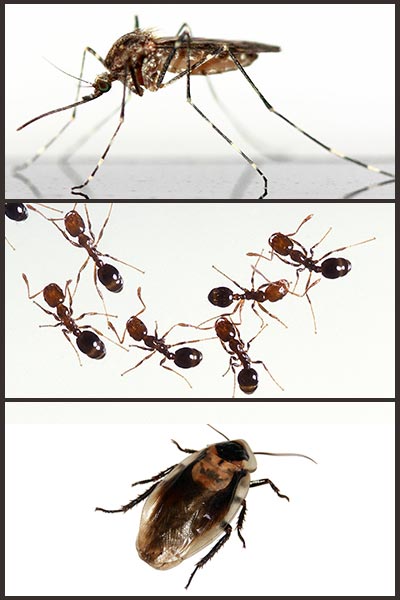Insect Allergy
Insect allergies are nothing to swat at – they can be uncomfortable, severe, and they’re one of the most complicated allergens to avoid. For those who react strongly to these allergens, allergy drops following the La Crosse Method Protocol are an option to help treat the cause of mosquito, fire ant, and cockroach allergy.
Mosquito Allergy
Most people get an itchy, small, raised bump after being bitten by a mosquito, but those who are allergic can experience intense symptoms. After a bite, those who are allergic can experience:
- Bruising near bite
- Inflamed bump, larger than a quarter
- Hives
- Fever and headache
Why do some people have an allergic reaction to mosquito bites? They’re allergic to the saliva that’s transferred during a bite.
Fire Ant Allergy
Fire ants sting people when their habitats or livelihood are threatened. They typically sting in a small cluster, and most people experience an immediate pain that subsides to mild itching. Unfortunately, those who are allergic may experience more intense symptoms:
- Swelling near sting
- Intense itching
- Burning, sometimes turning into blisters
For those who are severely allergic, anaphylaxis is possible for both mosquito bites and fire ant stings.
Cockroach Allergy
An allergy to cockroach is similar to an environmental allergy. The body parts of cockroaches, dead cockroaches, their waste, and their saliva can all trigger allergies and asthma. When proteins from these parts are inhaled, they cause typical environmental allergy symptoms, like:
- Itchy and watery eyes
- Runny nose
- Cough
- Sneezing
- Exacerbated asthma
Sublingual immunotherapy for insect allergies
Treating the cause of your underlying allergy can add a layer of safety in case of being bitten, stung, or exposed to the offending insect. With sublingual immunotherapy, the body learns to not react to the exposure. Learn more about how allergy drops work to see if disease-modifying treatment is a good fit for you.











